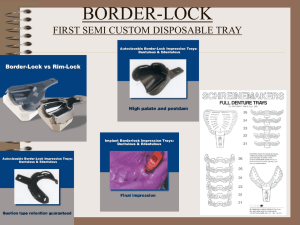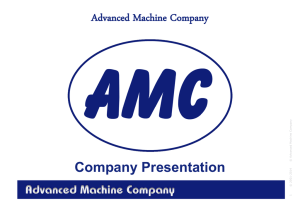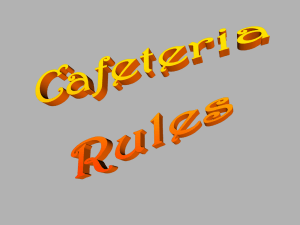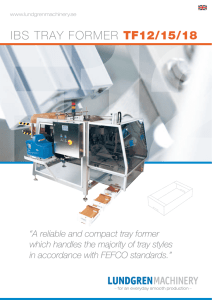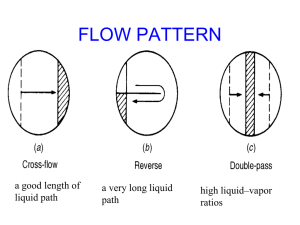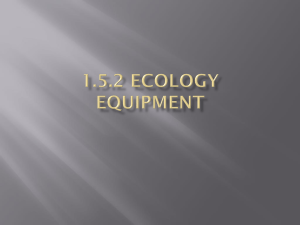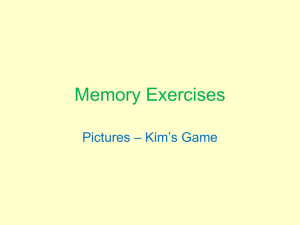Plate Waste Protocol
advertisement
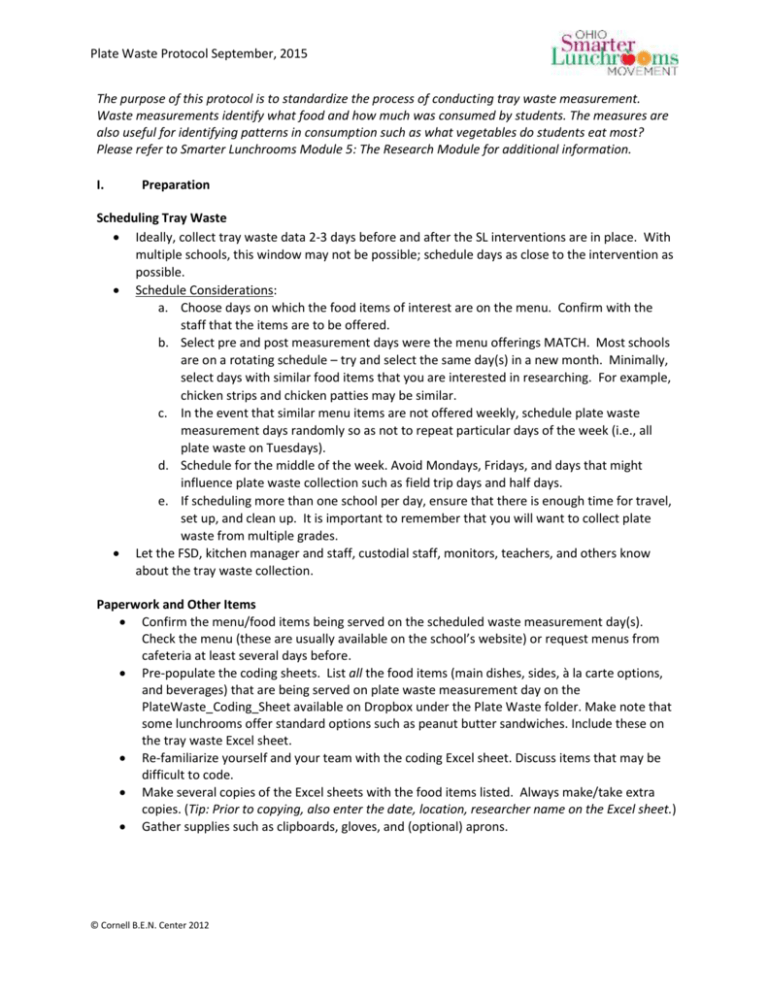
Plate Waste Protocol September, 2015 The purpose of this protocol is to standardize the process of conducting tray waste measurement. Waste measurements identify what food and how much was consumed by students. The measures are also useful for identifying patterns in consumption such as what vegetables do students eat most? Please refer to Smarter Lunchrooms Module 5: The Research Module for additional information. I. Preparation Scheduling Tray Waste Ideally, collect tray waste data 2-3 days before and after the SL interventions are in place. With multiple schools, this window may not be possible; schedule days as close to the intervention as possible. Schedule Considerations: a. Choose days on which the food items of interest are on the menu. Confirm with the staff that the items are to be offered. b. Select pre and post measurement days were the menu offerings MATCH. Most schools are on a rotating schedule – try and select the same day(s) in a new month. Minimally, select days with similar food items that you are interested in researching. For example, chicken strips and chicken patties may be similar. c. In the event that similar menu items are not offered weekly, schedule plate waste measurement days randomly so as not to repeat particular days of the week (i.e., all plate waste on Tuesdays). d. Schedule for the middle of the week. Avoid Mondays, Fridays, and days that might influence plate waste collection such as field trip days and half days. e. If scheduling more than one school per day, ensure that there is enough time for travel, set up, and clean up. It is important to remember that you will want to collect plate waste from multiple grades. Let the FSD, kitchen manager and staff, custodial staff, monitors, teachers, and others know about the tray waste collection. Paperwork and Other Items Confirm the menu/food items being served on the scheduled waste measurement day(s). Check the menu (these are usually available on the school’s website) or request menus from cafeteria at least several days before. Pre-populate the coding sheets. List all the food items (main dishes, sides, à la carte options, and beverages) that are being served on plate waste measurement day on the PlateWaste_Coding_Sheet available on Dropbox under the Plate Waste folder. Make note that some lunchrooms offer standard options such as peanut butter sandwiches. Include these on the tray waste Excel sheet. Re-familiarize yourself and your team with the coding Excel sheet. Discuss items that may be difficult to code. Make several copies of the Excel sheets with the food items listed. Always make/take extra copies. (Tip: Prior to copying, also enter the date, location, researcher name on the Excel sheet.) Gather supplies such as clipboards, gloves, and (optional) aprons. © Cornell B.E.N. Center 2012 Plate Waste Protocol September, 2015 Cafeteria Layout Plan the tray return space for data collection! (Tip: Look at the pictures from previously conducted observations and observation summary.) Use a table for the students to place their trays upon for visual evaluation. Pull the trashcans behind table; thus creating a barrier between the students and the trashcans. Ask the monitors or kitchen staff which tables are available and if the set-up is acceptable. o Depending on the school, the monitors, lunchroom size placing the trashcans behind the table may not be acceptable. This is okay; work within the system that is in place. Layout Considerations: a. Be mindful of how cafeteria staff disposes of garbage. Work with recycling, milk buckets, and compost systems. b. Are trays disposable? Re-used? c. If a table does not work, consider standing next to the garbage bin and code trays. d. Discuss the number of observers needed to conduct plate waste measurements. e. Note how students are “released’ from lunch; this may affect the number of coders needed. Do students rush to eat so they can go outside; do students stay seated until excused? Talk to the custodial and kitchen staff to get their input. Sampling Procedure Best practice is to collect data from a minimum of 20% of the lunches served. In small schools, it is possible to sample all trays during a lunch period. In large schools, take a sample of trays from each lunch shift. Pre-calculate the minimum number of trays needed to code. Confirm and record the process of sampling trays: a. If with a partner – who will do what? One person can code items returned to area A, whereas another person codes items returned to space B. If trays are returned to one common table, select every nth tray. Person A codes every Xth (2, 3 or 4th) tray. Person B codes every Xth tray. b. If coding alone, develop and record the random number for coding trays. For example, “every other tray was coded; all return trays were coded”. II. Data Collection On Tray Waste Measurement Day: Arrive at least 30 minutes prior to the lunch service period. Set up the tray return area for coding. Record on the coding sheet the grades and the time lunch service begins for all service periods. Observe and take mental note of pre-plated trays. Record standard serving sizes for all food items on the coding sheet (1/2 cup, 6 fluid ounces, etc). When lunch service begins, position yourself in the tray return area. Ask students to place trays on the table (if applicable). Visually estimate the amount of food students left on the plate. Remember: You are measuring amounts of foods wasted not consumed! © Cornell B.E.N. Center 2012 Plate Waste Protocol September, 2015 A. B. C. D. E. F. III. Enter “0” for none wasted Enter “1” for ¼ wasted Enter “2” for ½ wasted Enter “3” for ¾ wasted Enter “4” for all wasted If you can’t tell whether an item was on the tray, leave the space on the spreadsheet blank. G. Only enter data for food that you can identify. Data Collection Considerations: a. For food items that have been completely consumed, look for traces and or clues of the item being served. Food clues include: crumbs, core, pit, peel, or grease on the plate. Serving item clues include: a sandwich wrapper, a salad dressing or condiment packet, a serving cup or bowl, a spoon, straw or other utensil, or a particular tray. Observing the pre-plated food items prior to service again is essential. b. SALAD BAR Coding: If there are salad bar entrée(s) or salad bar sides, pre-record them with the serving size on the Excel coding sheet. c. MILK coding: Open the cartoon and code milk left. It may be difficult; use your best judgment. Curious students may ask about your purpose. Answer questions succinctly without indicating that the trays are being studied. For example, “I am trying to learn more about school lunches” is a good response. After completing tray waste for the day, clean up and return trashcans, tables, and other tools to their original location. As always, thank the staff before leaving. After the Data Collection IV. Email completed Excel sheets to Marietta Orlowski at Marietta.Orlowski@wright.edu, or Ashley Seybold at Seybold.4@wright.edu. Additional Information Please watch these two videos: Organizing a Tray Waste Study Team and Tray Waste Practice. Addition video training can be found at: http://smarterlunchrooms.org/more-videos © Cornell B.E.N. Center 2012
